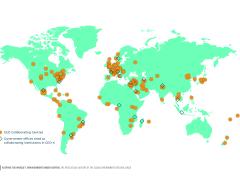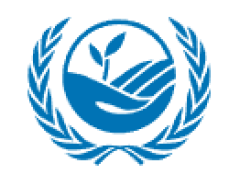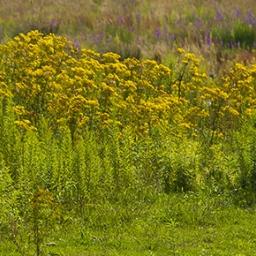PBL publishes Policy brief on Action Agenda for Nature and People
The ‘Action Agenda for Nature and People’ of the UN Convention on Biological Diversity (CBD) has potential to become a powerful vehicle for increasing the ambition level of global biodiversity policy and move towards rapid and scalable implementation. In a policy brief, PBL presents a first comprehensive analysis of international cooperative initiatives for biodiversity. Public, private and civil society actors are already engaging in a plethora of international cooperative initiatives.
Opportunities for other actors
The Post-2020 Global Biodiversity Framework presents a window of opportunity to increase the ambition level and improve the effectiveness of global biodiversity governance via the Convention on Biological Diversity (CBD). Stronger involvement and committment of non-state and sub-national actors (e.g. cities, regions, indigenous peoples and local communities, companies, and civil society organisations) to contribute to biodiversity conservation could be a feasible and impactful way forward.
At CBD COP-14 in Egypt in 2018, Parties decided to encourage non-state and sub-national actors to make voluntary commitments that contribute to the CBD objectives and the post-2020 biodiversity framework. The ‘Sharm El-Sheikh to Kunming Action Agenda for Nature and People’ was launched to catalyse non-state and sub-national initiatives that could ‘bend the curve of biodiversity loss’.
A diverse governance landscape
This policy brief identifies and analyses 331 international cooperative initiatives forming a crowded and diverse governance landscape, with increasing participation of private and civil society actors, and including public, hybrid and private organisational forms of collaboration. As it turns out, existing international cooperative initiatives align well with the current goals of the CBD and the Aichi targets. Initiatives predominantly focus on sharing information and networking (60%) followed by operational activities (33%) and standards and commitments (26%). The least common function is that of financing (17%).
Initiatives are active in areas with high biodiversity values, managed landscapes and urban areas, focussing both on conservation and sustainable use in relevant production sectors. They also include activities reflecting the multiple values of nature. The most active sectors, in terms of the number of initiatives, are agriculture and forestry. Mapping the geographical coverage of the initiatives shows a wide distribution of activities. There is a large degree of activity in Europe and most parts of African continent, but much less do in parts of Asia, primarily China and India and Latin America.
Challenges and opportunities
The policy brief identifies the benefits and challenges of a stronger participation by non-state and sub-national actors in the post-2020 biodiversity framework. It identifies ways for the CBD to fully harness the potential of existing international cooperative initiatives fon biodiversity for the ‘Action Agenda for Nature and People’. Further involvement by non-state and sub-national actors in the post-2020 global biodiversity framework possiblycould be a positive contribution to achieving new globally agreed targets.
A first step would be to harness the potential power of those thousands of cities, civil society organisations, companies, indigenous peoples and regions that are already taking action for biodiversity in international cooperative initiatives. Showcasing their concrete actions could help to increase state ambitions by showing the willingness of non-state and sub-national actors to take action within their respective sectors and realms. However, to create a strong Action Agenda in the coming 18 months, leadership from the CBD and its parties is needed.




